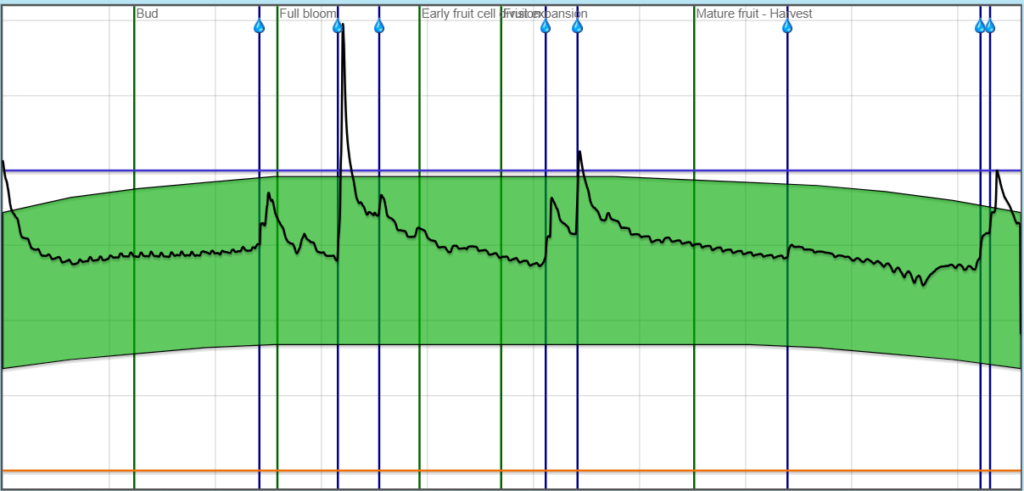Optimize apple quality and size with irrigation process control
Northwest apples are looking good with a normal or average crop predicted. New York started off well, but growers are concerned about lingering effects of smoke-filled skies from Canadian wildfires. And even with a promising start to the season, climate data continues to show a trend of warmer temperatures across the US. There’s no guarantee that the normally mild Northwest won’t see more high temperatures June through September. Now is the time to implement irrigation process control for the season to come.
For apple orchards, precisely timing crucial spring and summer irrigation is critical for high quality fruit production. Sufficient irrigation ensures that canopy, fruit, and leaves develop at this key time. Poor canopy development can limit tree development and hinder long term productivity. For adult apple trees, varying the amount of water can control fruit size, whether the aim is maximizing fruit size or limiting it, depending on goals.
Irrigation Process Control for Apples
What many apple growers have found is that simply knowing the temperature or the soil moisture at a point in time isn’t enough to adequately plan irrigation amounts and timing. US-based AquaSpy has solved this challenge for apple growers with irrigation process control technology that literally has a fuel gauge that shows the grower details about the crop root behavior in the active root zone:
- How deep is the active root zone
- How much moisture is available in the active root zone
- How the crop is taking up the available moisture
- Soil salinity
- Soil temperature layer by layer

Called “stepping” the AquaSpy summary chart shows each irrigation and how the crop is taking up moisture. When the crop is “drinking” what’s available, apple growers can see the moisture leaving the profile. It’s time to irrigate when the line heads toward the bottom of the green band. The crop-specific green band makes it easy to see when the crop needs water. When it needs refilled, the grower will get a notification via email on their phone or desktop that lets them know it’s time to irrigate.
Salt sensitive fruit crops
Fruit frees are among the most sensitive crops to soil salinity. Irrigation water contains salts and in dry periods such as the Northwest recently, those salts can build up in the soil. To alert growers to salt stress before it harms their sensitive crops like apples, apricots, cherries or citrus, AquaSpy sensors also measure soil Ec which is a measurement that indicates salt levels in the soil. Handy charts can inform salinity levels and alerts can be set to advise of impending dangerous levels that could cause the crop to stop taking up available moisture.
AquaSpy’s irrigation process control approach
AquaSpy looks layer by layer into the soil and can see what’s occurring at the active root zone. This insight is critical for deep rooted trees which need to provide water where and when it’s needed most.
Patented multi-sensor probes measure soil moisture, salinity, temperature and root zone activity independently at 4-inch intervals all the way down to 48 inches. Proprietary algorithms give yield-optimizing insights for ideal irrigation at critical growth stages such as bud development that impact the outcome of fruit and nut tree yields. The powerful AgSpy system provides analysis and actionable insights so growers can easily understand what is going on without having to visit the orchard or farm.
Be prepared for El Nino which can mean a drier and hotter season for the Pacific Northwest from June to August 2023. Learn more about how AquaSpy Soil Moisture Monitoring intelligence can help provide more insights for better irrigation decisions: contact a sales rep today.

